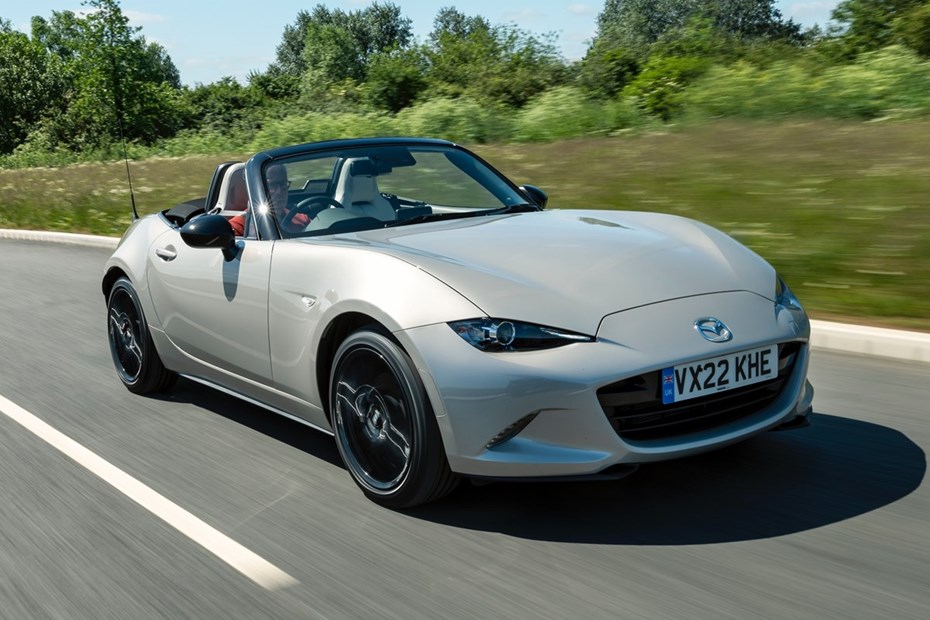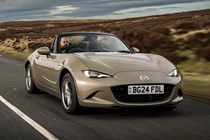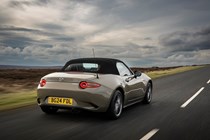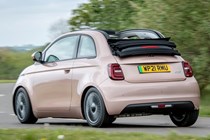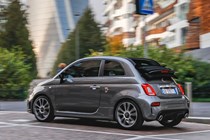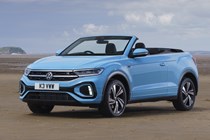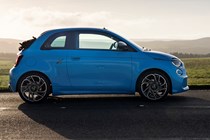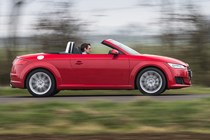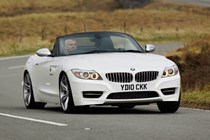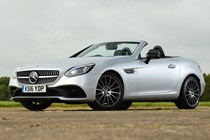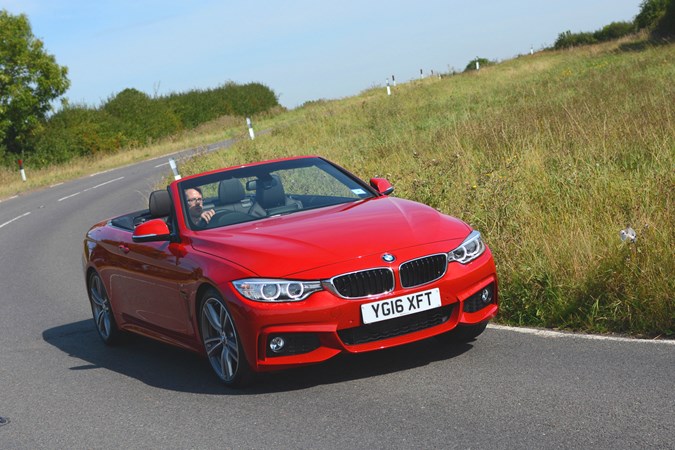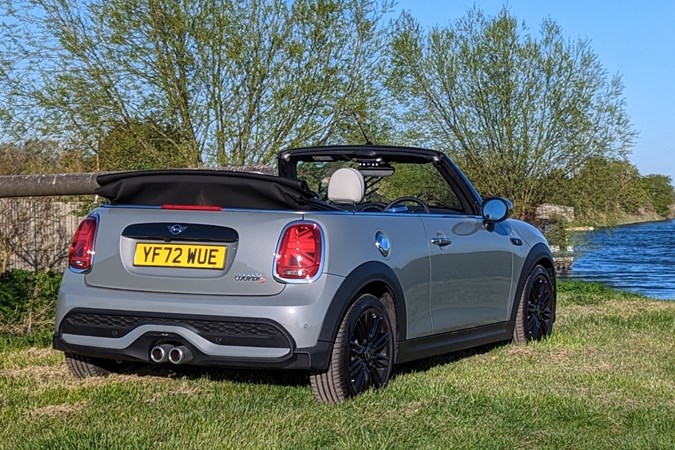Us Brits love convertible cars. Along with the Germans, we buy more than any other nation in Europe, which isn’t as silly as it sounds. If you live in Spain or Italy, gorgeous weather is an everyday occurrence, but the sun is far more fleeting in Blighty so, when it does rear its head, we want to make the most of it.
This list concentrates on the most affordable new convertible cars that we’d recommend, but not entirely – truly cheap convertibles are few and far between these days. However we’ve also come up with a selection of approved used alternatives for similar money to our favourite new choices, and the cars we have included represent excellent value.
You don’t sacrifice much in the way comfort and refinement by opting for a convertible car, either. The best modern convertibles have multi-layer soft tops to help keep wind noise to a minimum – so, even though the hard-top convertible has pretty much died out, we don’t miss it. Scroll down to read our full list of the best cheap convertibles to buy in 2025.
The best cheap convertibles to buy in 2025
A sports car icon – and everything we want from a small convertible
You can choose from two engines. The entry-level 1.5-litre model is a little gutless, but it’s happy to be worked hard, and suits the character of the car. The 2.0-litre is far brawnier, but it’s still outpaced by the best hot hatchbacks on the market. Still, straight-line speed was never the MX-5’s forte. It’s a focused driving machine that’s better suited to carving along a twisty road.
To find out more, read our full Mazda MX-5 review
Pros
- Brilliant fun to drive
- Roof raises or lowers in seconds
- Surprisingly fuel efficient
Cons
- Tiny cabin and boot
- Quick rather than fast
Surprisingly, Volkswagen’s mid-sized SUV works really well as a convertible
However, the T-Roc was never designed to have a convertible roof, so you sacrifice some of the standard car’s structural rigidity for the extra style – and you can feel that difference in the corners. But that’s not such a huge concern, because it isn’t a sports car. It’s all about comfort and ease of use. It’s at its best when paired with Volkswagen's 1.5-litre petrol engine and automatic gearbox. Plus, it’s quite spacious inside, with usable rear seat and big boot.
To find out more, read our full Volkswagen T-Roc Cabriolet review
Pros
- Spacious interior for a convertible
- Straightforward cabin controls
- Well-equipped as standard
Cons
- Handling is a bit wobbly
- Reduced engine range
Fiat’s fashion-first city slicker, made more fun with a drop-top
That means the 500e Convertible drives almost identically to the standard 500e, which is no bad thing. It’s fast in a straight line, fun on your favourite B-road and comfy on the motorway. Just remember to plan your charging stops if you to take it outside the city. Fiat says it can go 200 miles but that tumbles to around 140 miles during extended periods of high-speed driving.
To find out more, read our full Fiat 500e Convertible review
Pros
- Quiet, roof up or down
- Strong performance
- Genuinely small
Cons
- Range tumbles on motorway
- Rear seats are decorative
It’s a Fiat 500e – but quicker and far more boisterous
The result? A hot hatch that’s surprisingly quick in a straight line but compromised in most other areas. So, if you fancy a city-friendly EV with a bit of bite and the option of wind in your hair, the Abarth 500e Convertible has plenty of appeal. It’s certainly quicker and more fun than the regular Fiat 500e Convertible, which is also good fun, although it can’t match a proper hot hatch or sports car for driving enjoyment.
Read our full Abarth 500e Convertible review
Pros
- Fast and juvenile
- Hilarious sound generator
- Affordable running costs
Cons
- Small boot and rear seats
- Limited driving range
Caterham Seven 170
Probably the most fun you can have on four wheels
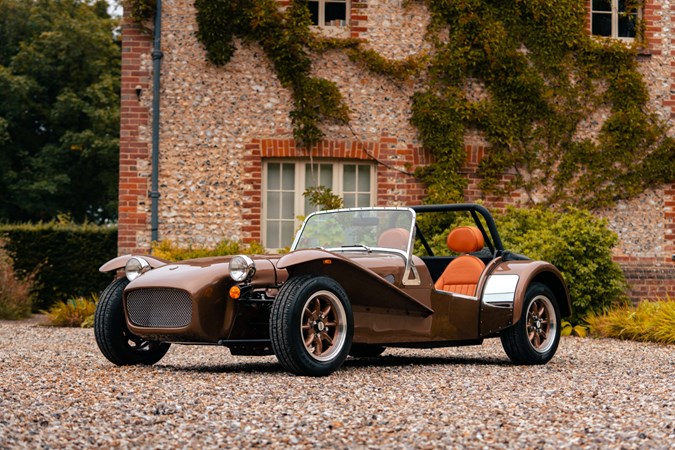

It’s best on a B-road, though, where you can enjoy driving in its purest form. No nannying electric aids – just you, four tyres and a Momo steering wheel. It makes even the smallest hot hatchbacks feel like limousines and makes a MINI Convertible feel gigantic – and that’s just what Caterham drivers love. You can even opt to build the 7 yourself, although having it pre-built from the factory isn’t too expensive. Prices for a factory-finished car start from a shade over £32,000.
Read our full Caterham Super Seven review
Pros
- Telepathic handling characteristics
- Dinky engine is very approachable
- Endlessly customisable
Cons
- You’ll have to be skinny
- … and not mind getting wet
Approved used alternatives
Here are four approved used alternatives to our favourite Mazda MX-5 that offer open-topped appeal for similar money – or less – from main dealers or specialists. They blend a similar mix of usability and running costs, making them excellent value picks if you’re convertible-curious, and want something that packs a little more punch than the options above.
Ageing gracefully and still good to drive, despite the hood's weight
For those chilly mornings, we’d look for one fitted with an optional neck warmer. We'd also look for the full sports car experience with a drop-top BMW M4. The roof mechanism has proven to be more water resistant than other options of this vintage, but small electric niggles persist, particularly the boot release that loves to fail. We'd also look past the 2.0-litre petrol engine (named N20) found in the 428i. It suffered from serious timing chain problems, an expensive and catastrophic issue.
To find out more, read our full BMW 4 Series review
Pros
- Comfortable cruiser
- Sharp handling
- Strong performance
Cons
- Roof eats boot space
- Heavier than the coupe
All-weather style, badge prestige and Quattro security
But be in no doubt, it’s no dynamic masterpiece, especially compared with the Porsche 718 Boxster. If you’re looking for total excitement and the best steering feel, you’ll want to look in that direction. But if you want a quick, capable open-topped sports car you can use every day, that's easy and rewarding to live with, and has an interior that’s a very pleasant place to spend time, the Audi TT Roadster is definitely worth looking at.
To find out more, read our full Audi TT review
Pros
- Superb build quality
- More practical than it looks
- Available with four-wheel drive
Cons
- Not as playful as the MX-5
- Rear visibility isn’t great
Premium, rear-wheel drive roadster with a grown-up edge
Even a four-cylinder Z4 is more potent than an MX-5, and the interior feels genuinely luxurious. They don't have a blemish-free reliability record, with electrical issues being the major bugbear, so make sure everything works as it should. Approved used examples start from around £15,000 for more recent examples with decent spec and equipment.
To find out more, read our full BMW Z4 review
Pros
- Punchy performance
- High-quality cabin
- Good cruising comfort
Cons
- Heavier than the MX-5
- Running costs will be higher
All the MINI values, in a drop-top package
It also looks a little silly with the roof piled on the boot spoiler like an old carpet, and the rear seats are little more than a token effort. But there are plenty of upsides, too. The handling may be compromised but it’s still sharper than most hatchbacks, with direct steering, strong grip levels and a general feeling of fun. There's an electric version available, too, although that's rare having been on sale between 2023-2024. Finally, there's a new one on the way, so keep your eyes peeled for that.
To find out more, read our full MINI Convertible review
Pros
- Proper convertible roof
- Range of nippy engines
- Upmarket interior
Cons
- Hatch handles better
- Useless rear seats
A baby SL with a retractable hard top
Go in with your eyes open, and buy the best you can find, as there are some reliability issues. Watch for sticking roofs, power steering pump failures, and boot leaks, roof jams, and potential paint damage, especially on red models. Used SLCs can be found from around £18,000 and make an excellent left-field pick for those who want a touch of elegance.
To find out more, read the full Mercedes-Benz SLC review
Pros
- Folding hard top
- Smooth cruising
- Premium feel and badge
Cons
- Not particularly sharp to drive
- Limited practicality
FAQs: Convertible car buying guide
-
What are the disadvantages of convertible cars?
That all depends on what sort of person you are. If you like to make the most of every ray of sunshine Britain gets, then you’ll probably struggle to see the disadvantages of owning a convertible. However, if you value comfort, refinement and practicality above all else, you might find a convertible’s increased wind noise, more flexible body and smaller cabin frustrating.
-
Which is the cheapest new convertible?
The cheapest new convertible you can buy today is the Fiat 500C. Prices start from just £19,440. It isn’t a particularly exciting car, but it’s stylish and efficient thanks to its 1.0-litre mild hybrid petrol engine which Fiat says can return up to 60mpg. It shares the same convertible roof layout as the Abarth 595C, with fixed pillars and a full-length fabric sunroof.
-
Should you buy new or used?
Deciding between a new or used affordable convertible means you get choices. A brand-new car gives you a full warranty, the latest tech, and that 'new car' feel – but cash buyers pay a premium, and depreciation hits hardest in the first few years. On the other hand, a used convertible offers better value, letting you access higher-spec models or premium brands for less money. Be sure to buy from a reputable dealer or specialist and check for signs of wear, especially around the roof mechanism and seals. If you're after the best bang for your buck, used often wins.
-
Are convertibles slower with the top down?
Fractionally, but you’ll struggle to feel the difference. Having the roof retracted will increase the amount of drag acting on a convertible car, which will reduce its top speed. But the affordable convertibles in this list aren’t fast enough for that to be a concern – and having the roof down won’t dramatically affect any of these car’s ability to travel at motorway speeds.
-
Should I get a soft top or hard top convertible?
Hard-top convertibles are few and far between these days – and most of those that remain (such as the Ferrari 296 GTS) are ruinously expensive. The only reasonably affordable tin-top convertible on sale now is the Mazda MX-5 RF – but we wouldn’t choose it over the soft-top model because it isn’t as good to drive thanks to the heavy roof mechanism.
-
Do convertible cars hold their value?
Convertible cars are unusual because their value fluctuates with the seasons. They tend to experience a slight increase in value during spring and summer (when drivers are most able to enjoy them), before dipping in price as the colder months arrive. So, if you’re selling a convertible, wait until after April to get the best price. If you’re buying one, make sure you close the deal in winter to reap the biggest savings.
-
Are convertible cars safe?
Convertible cars are made using less metal, which means they’re not as safe as a hard top in a crash – especially if you’re unfortunate enough to roll the car. However, manufacturers are doing their best to engineer their way around the issue. The MX-5, for example, has a suite of safety equipment, including lane-keeping assist and a traffic sign recognition system. Plus, it scored an impressive four stars in its original Euro NCAP crash test, back in 2015. If you’re particularly concerned about safety, you can always opt for a car such as the Fiat 500e Convertible, which has metal pillars from the front to the rear, making it stronger in an accident.
-
Are there any electric convertible cars?
Electric convertible cars are few and far between, especially at the affordable end of the market. However, MG offers the Cyberster Roadster. It sports a 314hp electric motor and a claimed maximum range of 330 miles. It isn't what you'd call cheap (prices start from £50,000), but it’s more affordable than its rivals from BMW, Porsche and Mercedes-Benz. As well as the Fiat and Abarth twins, there will also be an electric MINI Convertible joining the fray later in 2025.
Just so you know, we may receive a commission or other compensation from the links on this website - read why you should trust us.


